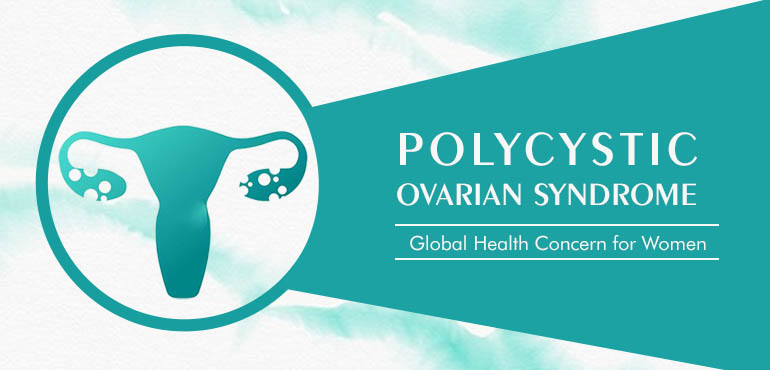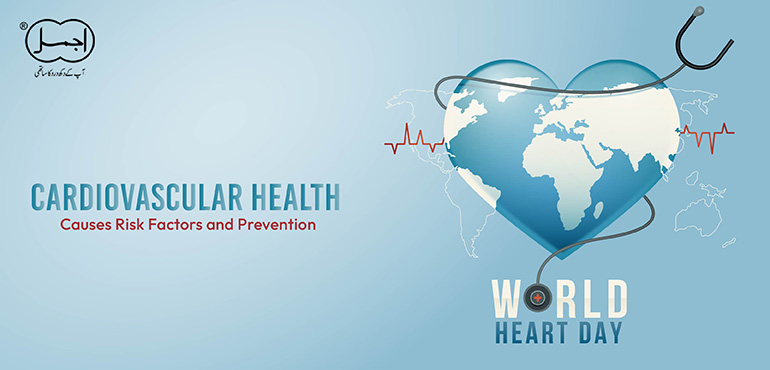PCOS or Poly Cystic Ovarian Syndrome is one of the most common reasons for irregular periods, infertility, central obesity, or weight gain around the center of the body. POLYCYSTIC OVARIAN SYNDROME It is also the common cause of persistent acne, male-type baldness, hair loss, and dark pigmentation around the neck which is known as acanthosis nigricans. It can further give rise to complications like infertility, cardiovascular ailments, type-2 diabetes mellitus, metabolic syndrome, and carcinoma of the breast and endometrium.
Causes (Polycystic Ovarian Syndrome)
The sedentary lifestyle, craving for the junk food, and emotional and behavioral disturbances (like highly competitive attitude and social insecurities) are common causes of PCOS.
Diagnosis
The investigations show increased LH levels, increased estrogen reduced SHBG, increased testosterone and increased serum insulin resistance and the scan shows the ovaries volume of more than 10 ml cube and multiple cysts arranged circularly.
Treatment (Polycystic Ovarian Syndrome)
The objective of the treatment includes to regulate the cycle, stimulating the ovary, and to normalize the hormonal imbalance so we advise diet and lifestyle changes and oral medications. If a patient follows them regularly within 3 to 6 months we can establish the stromal thickness reduction as well as the ovarian volume reduction as well as we can establish the growth of the ovarian follicles in the scans.
Unani system of medicine divides the treatment into following categories:
Ilaj bil Tadbeer (Regimental therapy)
Modifications to one’s way of life should include frequent exercise, a brisk walk, diet control, and enough sleep.
If the patient is obese, weight loss is encouraged; hammame yabis (steam bath) and dalak (massage) can help with this.
Hijama (wet cupping) is used on the calf muscles of both lower limbs to direct blood flow into the uterus in order to trigger menstruation.

Ilaj bil Ghiza (Dietotherapy)
A healthy diet should be light and simple to digest.
Use fibre rich foods, such as fresh fruit and green leafy vegetables.
Avoid eating anything that will take a long time to digest, is heavy, or is spicy.
Be sure to stay hydrated.

Ilaj bid dawa (Pharmacotherapy)
Mudire Haiz (Emmenogogue) Drugs
a) Single Drugs: Abhal, Badiyan, Rewand Chini, Tukhme Kasoos, Asgand, Aspand, Asaroon, Turmus, Habbe Balsan, Post Amaltas, Persiawa Shan, Habbe Qillt, Habbe Qurtum, Khashkhash, Gule Teesu, Karafs, Elwa, Heeng, Jausheeer, Tukhme Gazar.

b) Compound formulations: Habbe mudir, Sharbat buzoori, Joshanda mudir haiz, Murakkabate foulad, etc. POLYCYSTIC OVARIAN SYNDROME These emmenagogue medications work best when combined with uterine tonics like majoon muqawwi rehm, which is made entirely of asgand and which induces menstruation by maintaining hormonal equilibrium.
Tadeel Mizaj (Correction of temperament)
a) Munzij: Mavez Munaqqa, Aslusoos, Badiyan, Persia wa Shan, Anjeer Zard
b) Mushil: Turbud, Habun Neel, Ayarij Faiqrah, with Arqe Badiyan.
c) Tabreed: Khameera Gauzaban Sada that is wrapped in Warqe Nuqra
Weight Reduce
a) Dawae Luk Sagheer with Arqe Badiyan
b) Safoofe Muhazzil with Arqe Zeera.
c) Itrefil Sagheer at bedtime.
Specific Drugs
a) Insulin sensitizers like Darchini, Rewand, Abhal, Mushktramashi, Zafran, Asgand, etc.
b) Natural drugs for hirsutism like Nagarmotha, Amba Haldi, Methi, Pudina, Soya, Neem, Kalonji, etc. (Firdose and Shameem, 2016)
Essential Herbs to treat PCOS/PCOD
Satawar (Asparagus racemosus)
Satawar regulates monthly cycles, promotes healthy ovarian follicle growth, and nourishes female reproductive health. Satawar aids in assessing hyperinsulinemia as for its natural plant-based estrogen).

Giloe (Tinospora Cordifolia)
Tinospora cordifolia, sometimes known as giloe, is a potent herb that has anti-inflammatory properties. Insulin dysregulation and many ovarian cysts are thought to have their roots in chronic tissue inflammation. It provides nutrients for the body’s tissues and voluntarily increases metabolism. Additionally, it helps to reduce insulin resistance.

Saunf (Foeniculum vulgare)
Fennel, or saunf (Foeniculum vulgare), contains unique medicinal ingredients that can reduce insulin resistance and fight inflammation in this disease. The cellular imbalance that might otherwise result in metabolic imbalance is reduced by the fennel’s phytoconstituents.

Triphala
An amalgamation of the trio Amla (Emblica Officinalis), Halela (Terminalia chebula), and Balela (Terminalia bellerica) mixed in it(Polycystic Ovarian Syndrome).It contains high levels of vitamin C, a powerful natural antioxidant that fights inflammation by scavenging free radicals. Triphala works as a purifying and detoxifying agent
Aelva (Aloe barbadensis)
It modifies regular menstruation, corrects ovarian hormonal imbalance, and regulates menstrual cycle periodicity.. (Bhat, 2021)
BHAT, I. A. 2021. Comprehension, Management, and Treatment of Polycystic Ovarian Syndrome via Allopathic, Unani and Ayurvedic Perspectives. Journal of Gynecology and Womens Health, 21.
References
FIRDOSE, K. F. & SHAMEEM, I. 2016. An approach to the management of poly cystic ovarian disease in Unani system of medicine: A review. Int j appl res, 2, 585-90.




